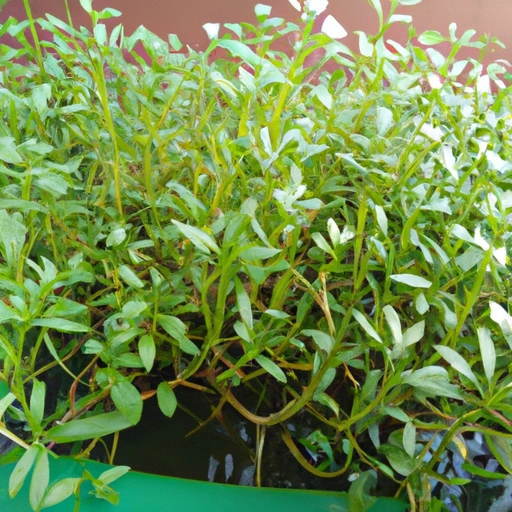Watercress
Description

Watercress is a leafy green aquatic plant belonging to the Brassicaceae family. It is known for its peppery, slightly tangy flavor that adds a zesty kick to various dishes. The lush, small, round leaves and edible stems of watercress are often used fresh in salads, sandwiches, and as a garnish. Watercress thrives in clear, slow-moving water, and its crisp texture makes it a favored ingredient in both raw and lightly cooked preparations.
Common uses
Watercress is commonly used as a fresh, peppery addition to salads, a flavorful garnish, and a nutritious component in smoothies and juices. It also finds its place in hot preparations such as soups, stews, and sautéed dishes, where it contributes a subtle piquancy and vibrant green color. Given its delicate nature, watercress is usually added towards the end of cooking to preserve its texture and nutritional integrity.
Nutritional value
Calories
Watercress is very low in calories, with about 4 calories per cup (34g or 1.2 oz).
Protein
This leafy green provides 0.8 grams of protein per cup (34g or 1.2 oz).
Fat
Watercress contains a negligible amount of fat, with less than 0.1 grams per cup (34g or 1.2 oz).
Carbohydrates
It is low in carbohydrates, with approximately 0.4 grams per cup (34g or 1.2 oz).
Vitamins
Watercress is rich in vitamins, particularly vitamin K, vitamin C, and vitamin A (in the form of beta-carotene).
Minerals
It also provides essential minerals like calcium, potassium, and manganese.
Health benefits
Watercress is considered a superfood due to its high density of nutrients relative to its caloric content. The abundance of vitamins A, C, and K contribute to a strong immune system, healthy vision, and bone health. Its high antioxidant content may reduce the risk of chronic diseases and combat oxidative stress. The presence of glucosinolates in watercress also helps in supporting detoxification processes in the body.
Potential risks
Although watercress is generally safe for consumption, it can pose risks if gathered from contaminated water sources, leading to potential exposure to harmful bacteria or parasites. Individuals on blood-thinning medications should also be mindful of watercress's high vitamin K content, which can affect blood clotting.
Common recipes
Watercress is featured in diverse recipes, from the classic English watercress soup to the peppery watercress salad with a simple vinaigrette. It is also a staple in Asian stir-fries and rolls.
Cooking methods
Typically used raw or lightly wilted, watercress can be steamed, sautéed, or pureed for soups. It is best to avoid overcooking to preserve its nutritional properties and distinct flavor.
Pairing with other ingredients
Watercress pairs well with citrus fruits, such as lemon and orange, which complement its peppery taste. It also works beautifully with eggs, dairy, and mild-flavored proteins like chicken and fish.
Summary
Watercress is a versatile, nutrient-packed ingredient that has been celebrated throughout history for its health benefits and culinary applications. From raw salads to warm dishes, watercress adds a burst of flavor and a wealth of nutrients to any meal. Its adaptability across various cuisines makes it a beloved green for chefs and home cooks around the globe.